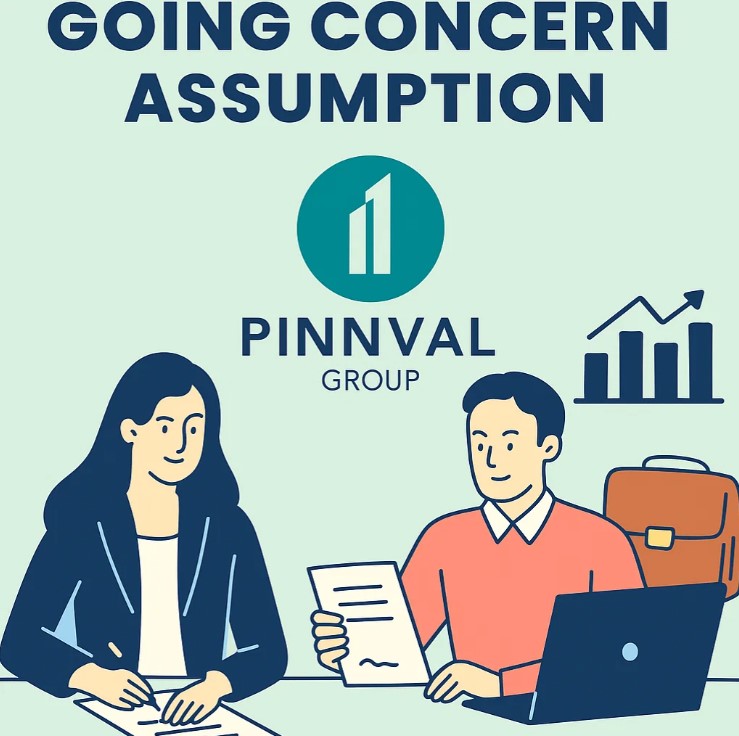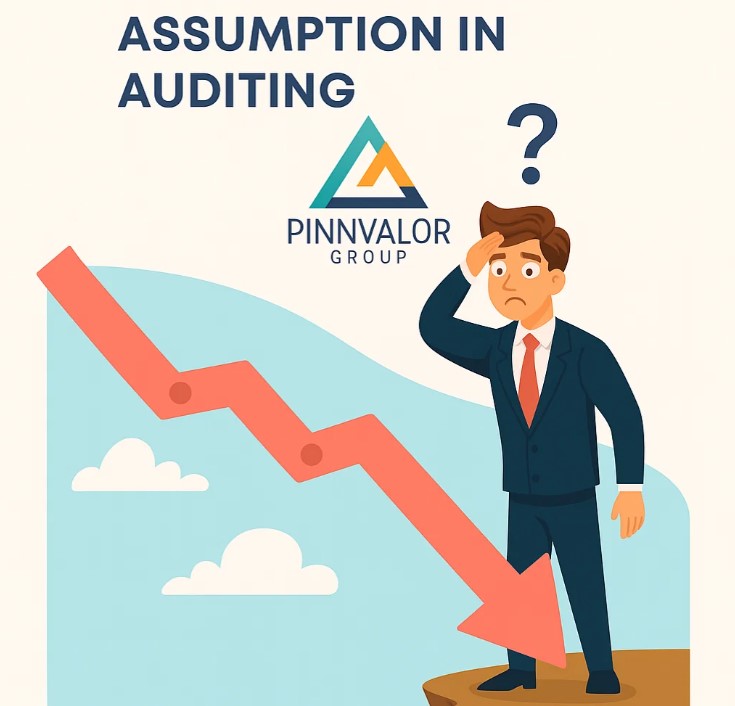
SA 570 – Evaluating the Going Concern Assumption in Auditing
The going concern assumption presumes that an entity will continue operating for the foreseeable future without the intention or need to liquidate or materially curtail operations. SA 570 (Going Concern) guides auditors in evaluating whether this assumption remains appropriate and how to report their conclusions.
Can management’s revival plans withstand the rigorous tests of SA 570?
Audit reports are more than numbers—they narrate a company’s future. Through SA 570, auditors test if ‘going concern’ is a reality or a red flag.
Understanding the Going Concern Assumption
When the going concern basis is inappropriate, financial statements may need to be prepared on a liquidation basis or another suitable basis. Indicators that may cast significant doubt on an entity’s ability to continue include:
- Financial indicators: recurring losses, negative operating cash flows, adverse ratios, loan defaults.
- Operational indicators: loss of key management, dependence on a single supplier/customer, labor issues.
- External indicators: litigation, regulatory changes, macroeconomic downturns, natural disasters.
Objectives of SA 570
- Evidence: Obtain sufficient appropriate audit evidence about the appropriateness of management’s use of the going concern basis.
- Conclusion: Conclude whether a material uncertainty exists related to events or conditions that may cast significant doubt.
- Reporting: Report appropriately based on the evaluation and the adequacy of related disclosures.
Responsibilities: Management vs. Auditor
Management’s Responsibility
- Assess the entity’s ability to continue as a going concern.
- Disclose material uncertainties where applicable.
- Prepare financial statements using the appropriate basis of accounting.
Auditor’s Responsibility
- Evaluate the reasonableness of management’s assessment and underlying assumptions.
- Consider information obtained up to the date of the auditor’s report.
- Determine whether disclosures are adequate and modify the report if necessary.
Key Audit Procedures under SA 570
- Review management’s assessment: period covered, process followed, and assumptions used.
- Analyze forecasts and budgets: at least the next 12 months from the reporting date.
- Evaluate cash flows & financing: borrowing facilities, covenant compliance, refinancing plans.
- Assess external factors: industry trends, regulatory shifts, supply-chain conditions.
- Obtain written representations: management’s plans to mitigate identified risks.
- Sensitivity/Stresstesting: test key assumptions and downside scenarios.

Possible Outcomes & Reporting Implications
-
No material uncertainty:
Going concern basis is appropriate; issue an unmodified opinion (no special section).
-
Material uncertainty adequately disclosed:
Include a “Material Uncertainty Related to Going Concern” section; opinion remains unmodified.
-
Material uncertainty not adequately disclosed:
Express a qualified or adverse opinion depending on the pervasiveness of the omission.
-
Going concern basis inappropriate:
Express an adverse opinion if financial statements are prepared on an inappropriate basis.
-
Management unwilling to assess/provide evidence:
Consider a disclaimer of opinion due to limitation of scope.
Red Flags the Auditor Should Probe
- Liquidity stress: stretched payables, delayed salaries, frequent overdraft breaches.
- Revenue concentration: heavy reliance on one customer/market.
- Funding risk: imminent debt maturities, going concern clauses, uncertain refinancing.
- Operational fragility: plant shutdowns, critical supplier disruptions, key-person risk.
Illustrative Example
A company has incurred losses for two consecutive years and breached debt covenants. Management presents a revival plan supported by signed term sheets for new equity and a lender waiver. The auditor tests the authenticity of the agreements, reviews cash flow forecasts, validates assumptions (sales ramp-up, margins), and performs sensitivity analysis. If the plans are realistic yet uncertainties remain, the report includes a “Material Uncertainty Related to Going Concern” section with clear reference to the disclosures.
Best-Practice Disclosures (Management)
- Transparent narrative: nature of events/conditions and how they impact solvency and liquidity.
- Time horizon: coverage of at least 12 months from the reporting date.
- Mitigation plans: fundraising, cost rationalization, asset sales, covenant negotiations.
- Quantitative detail: maturity profiles, headroom to covenants, forecast cash buffers.
Conclusion
The going concern assessment under SA 570 is central to stakeholder confidence. By rigorously evaluating management’s assessment, testing assumptions, and reporting transparently, auditors provide decision-useful insight into an entity’s viability. In volatile environments, disciplined execution of SA 570 procedures—and clear disclosures—are essential for high-quality financial reporting.
